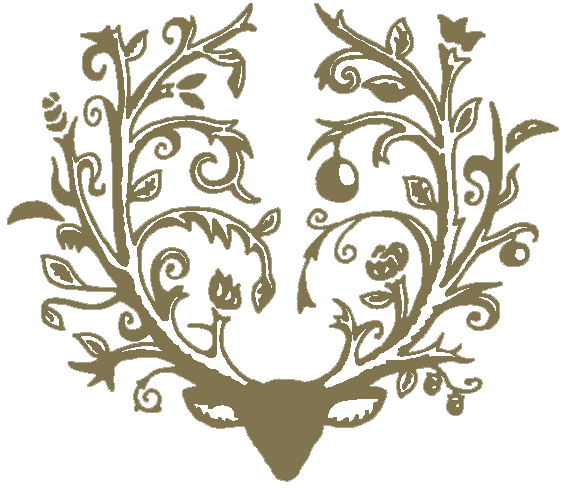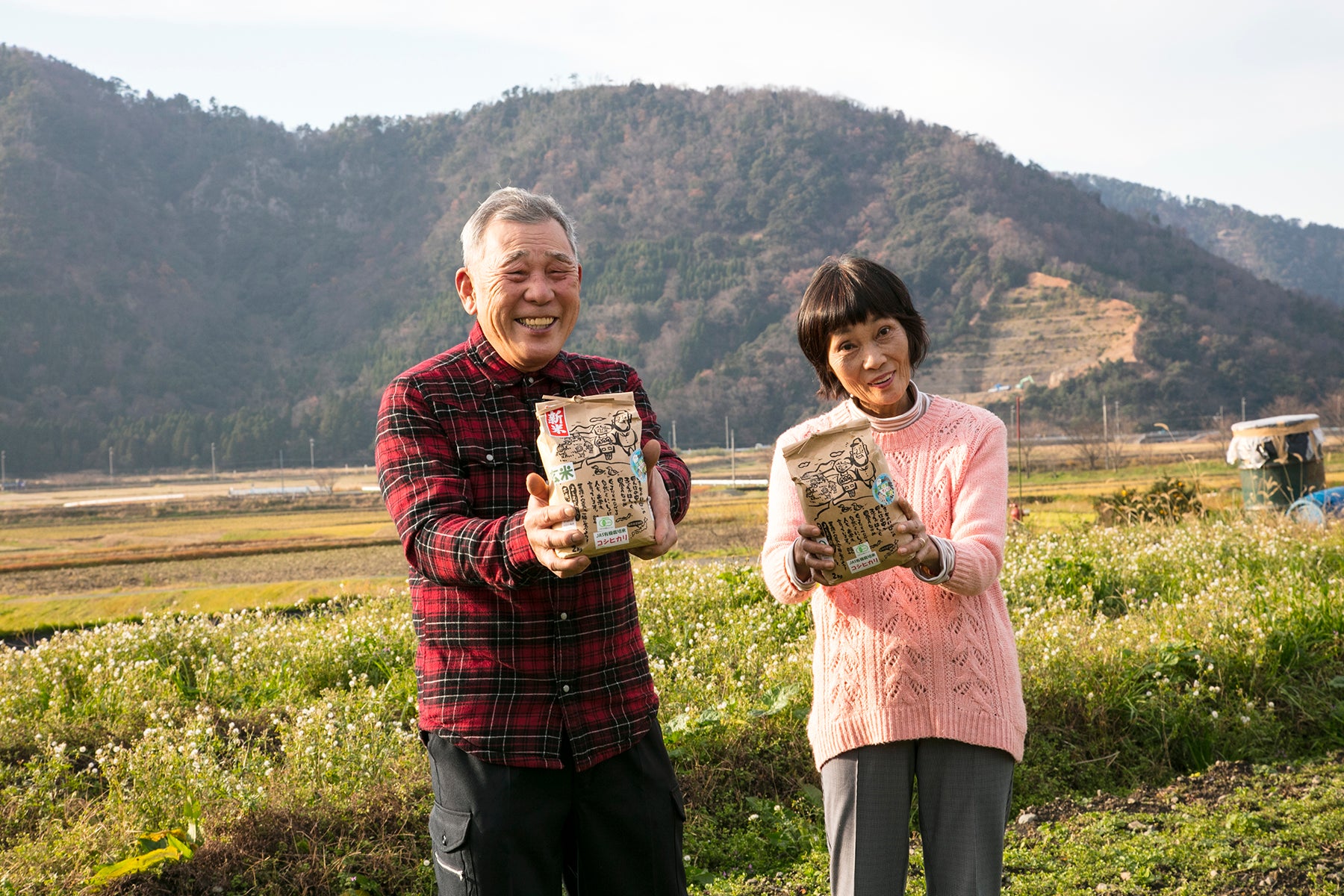
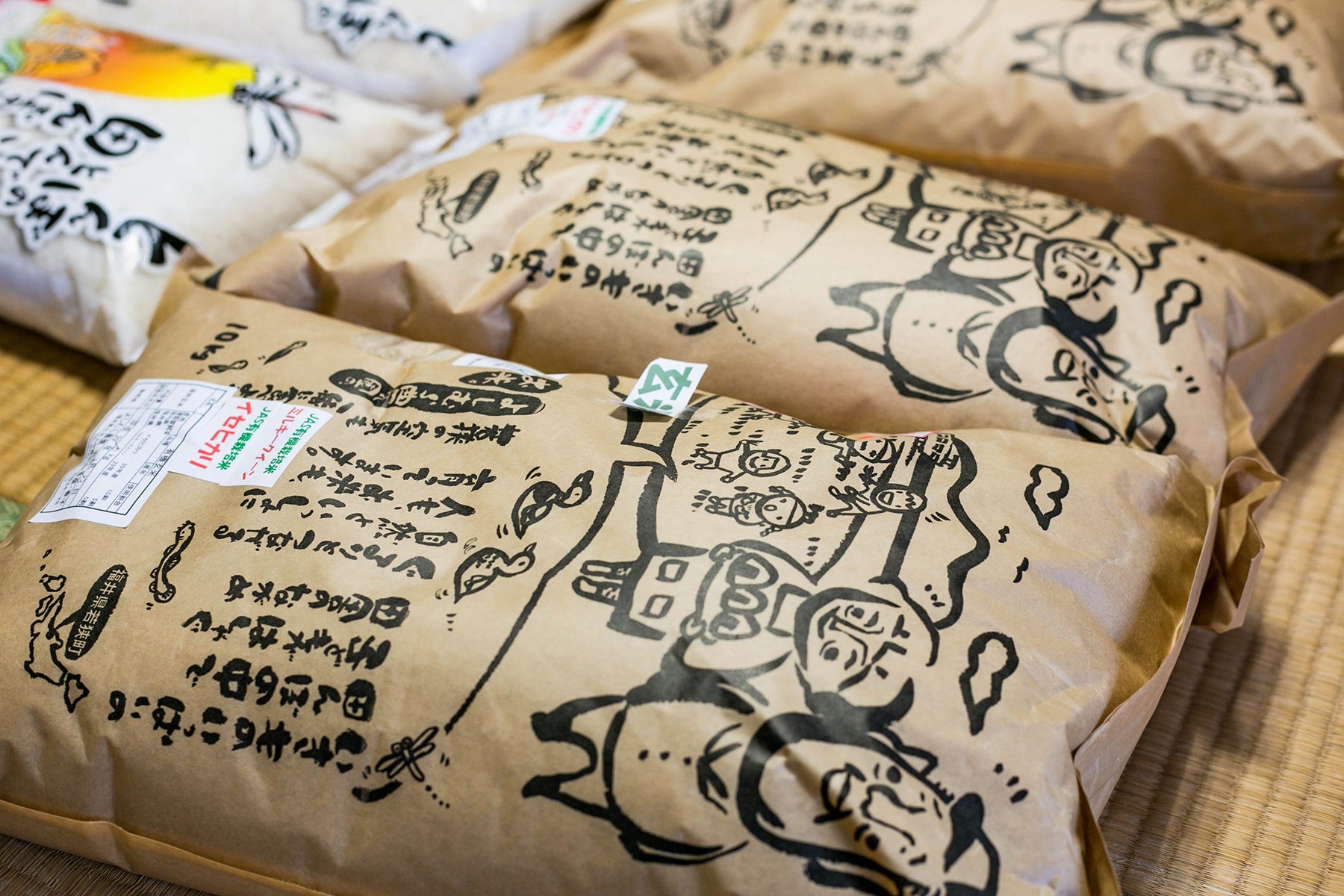

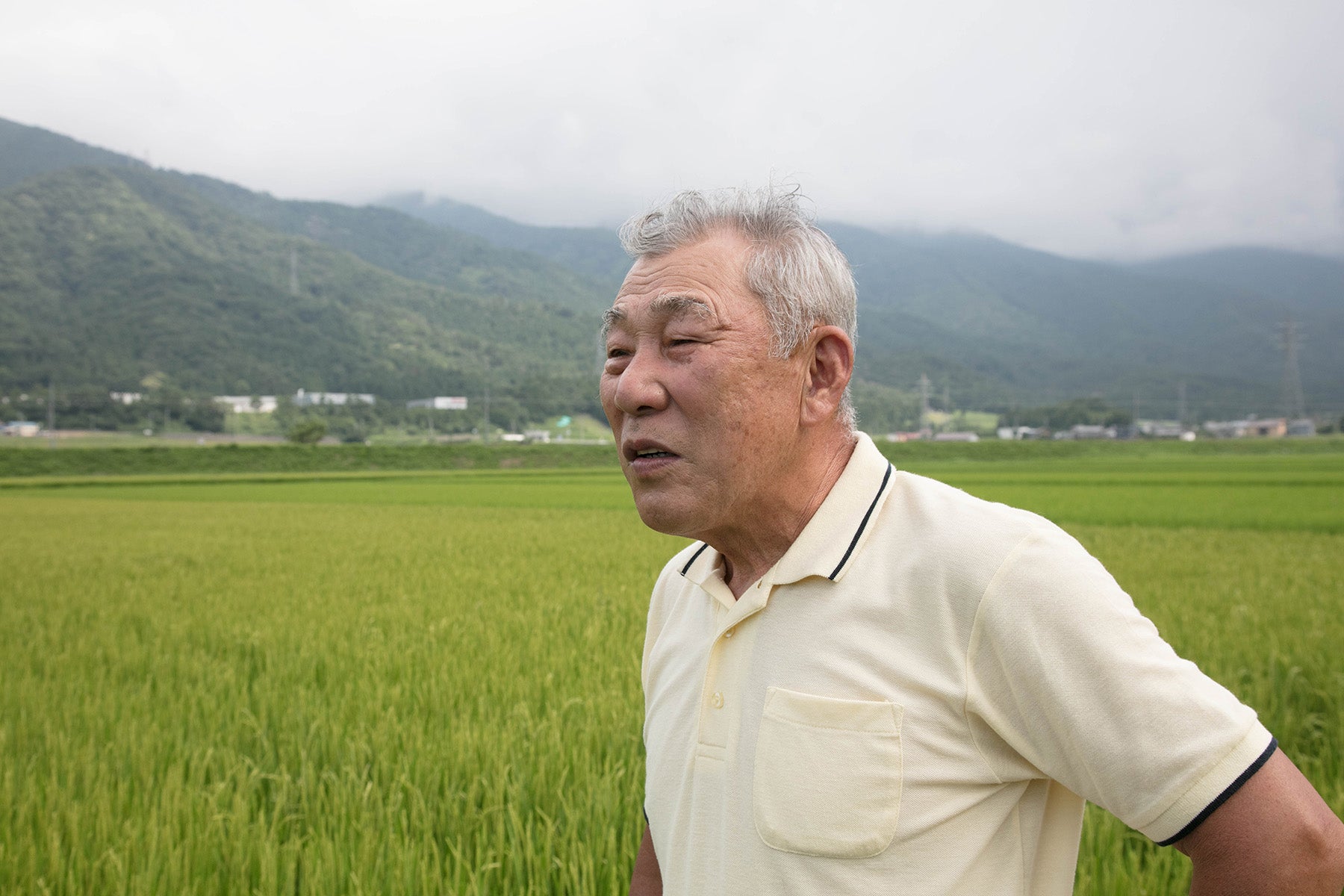

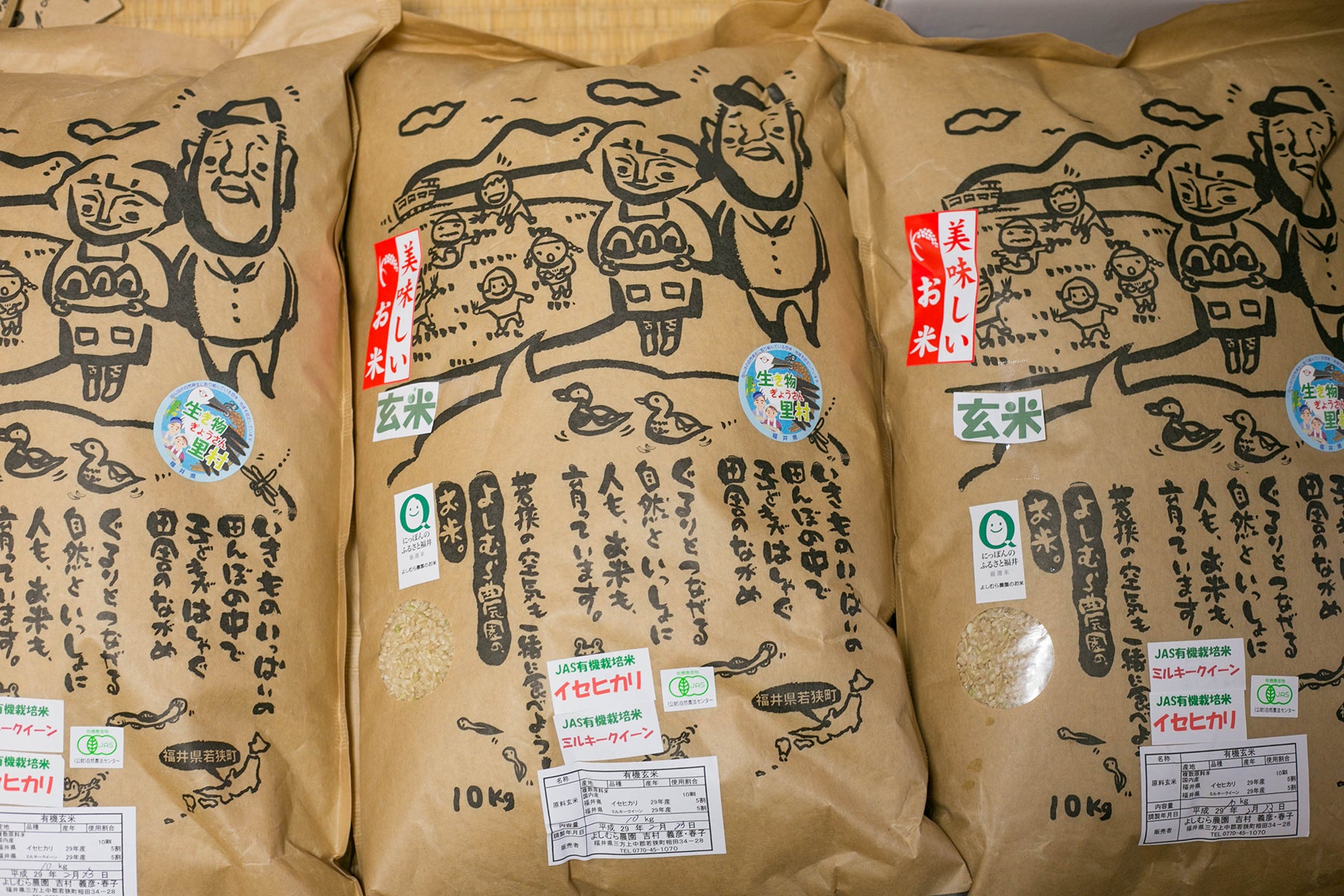
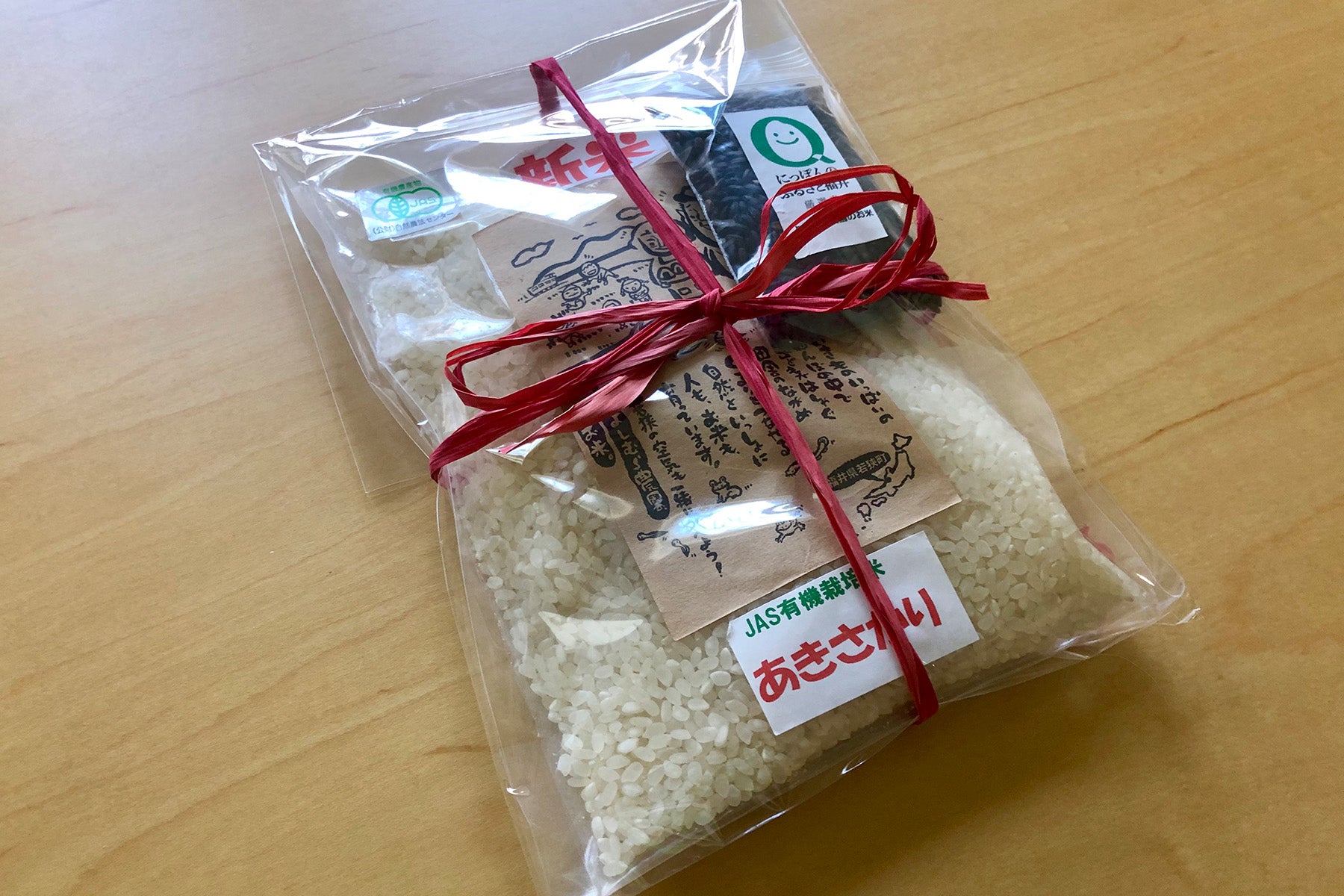
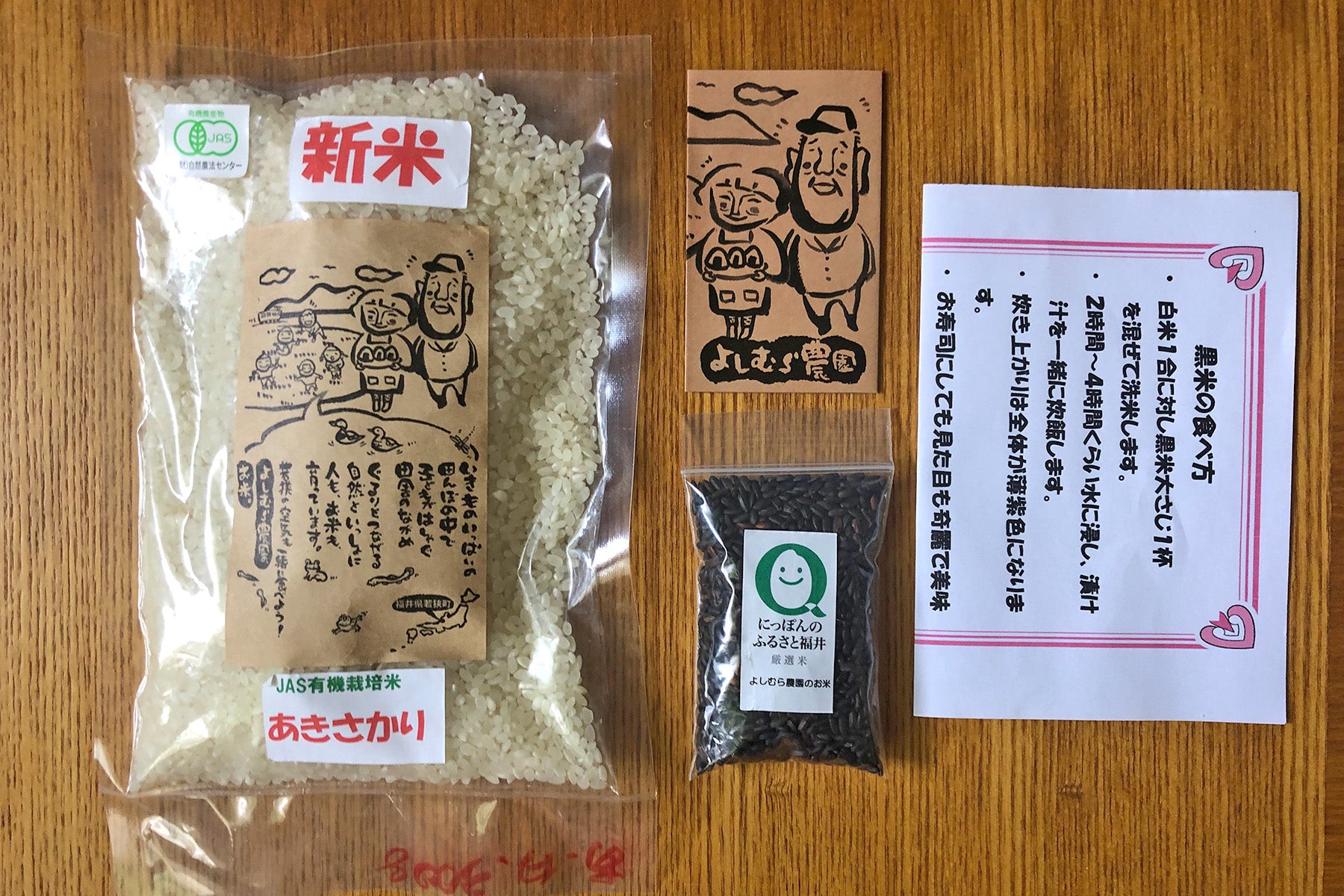
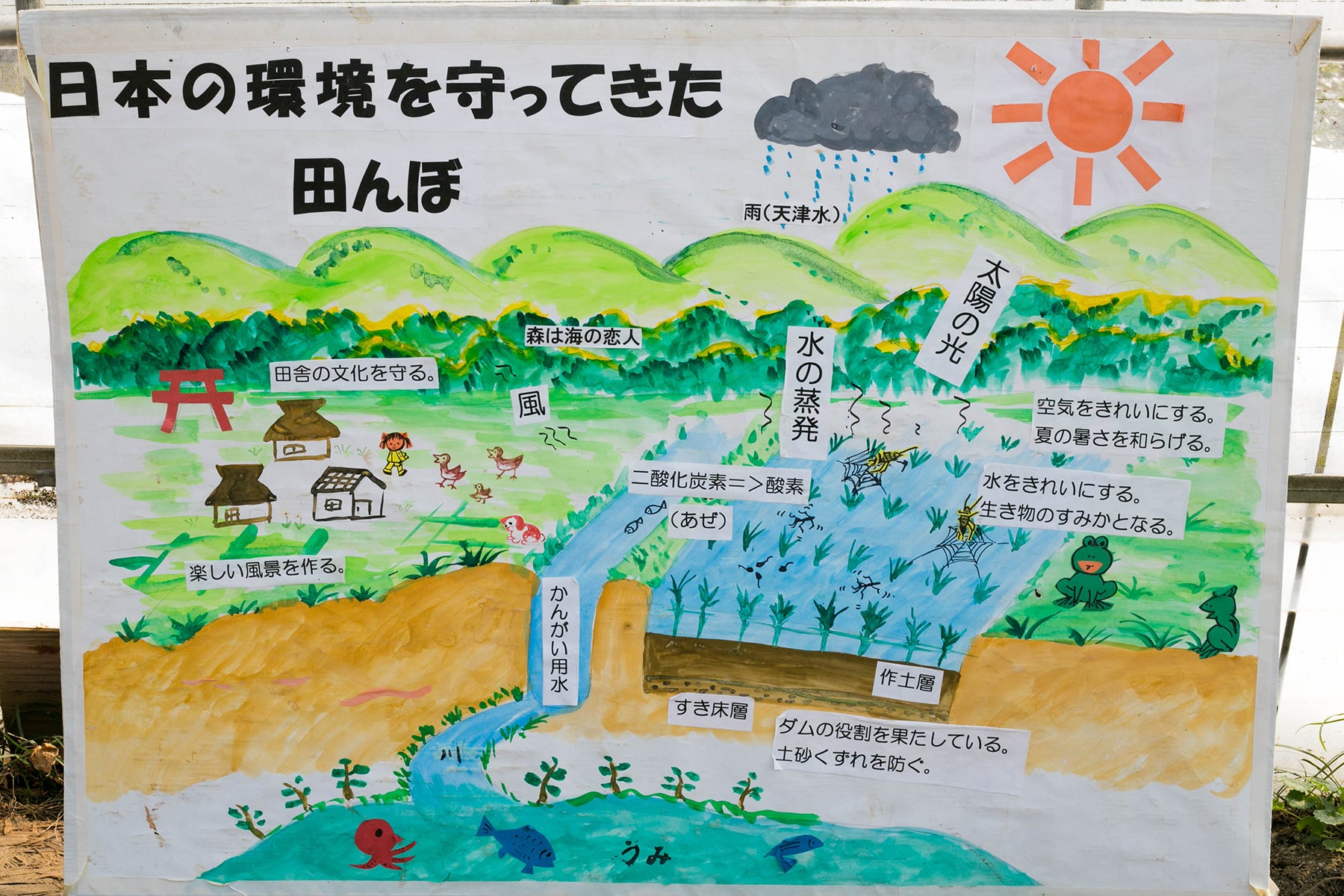
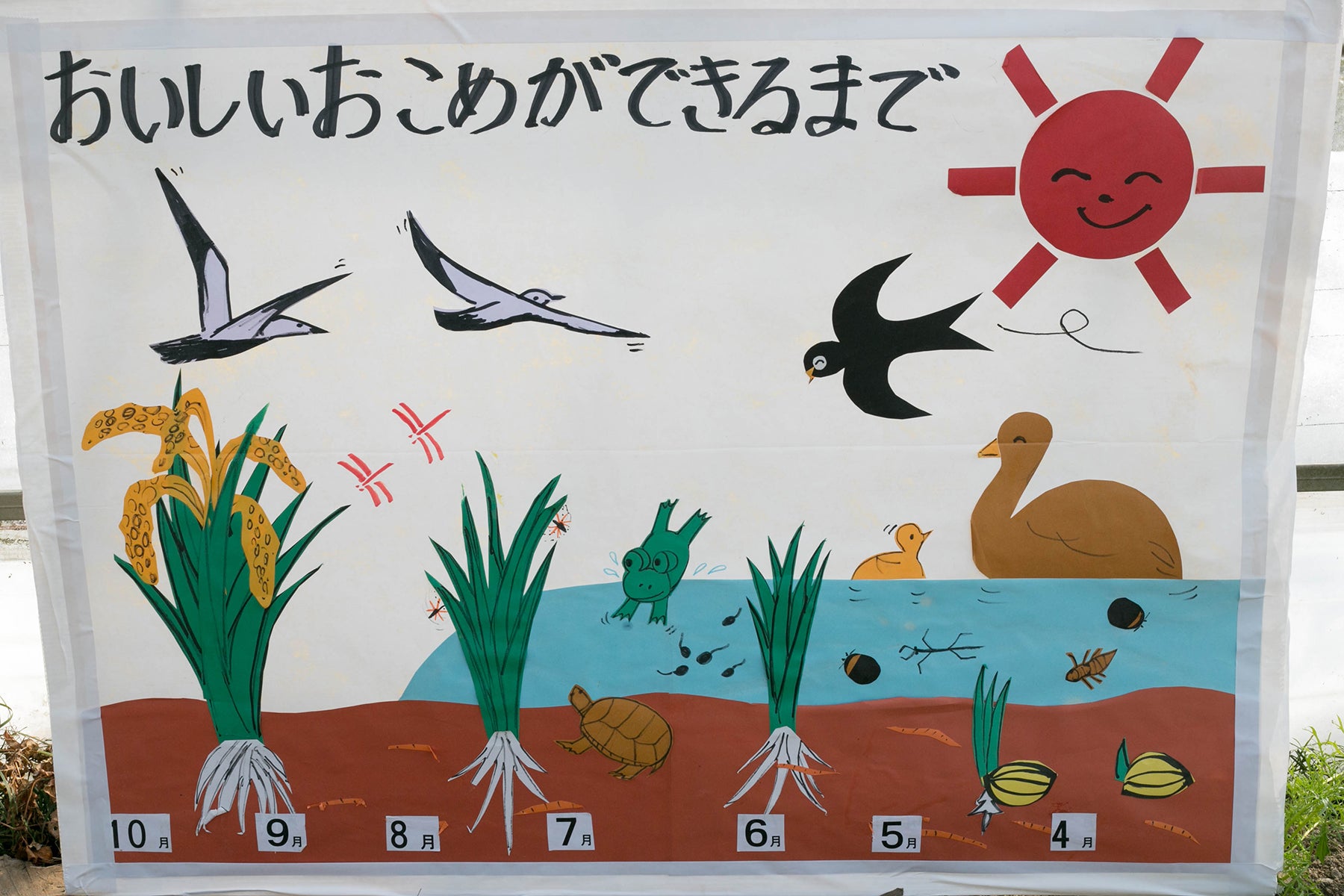
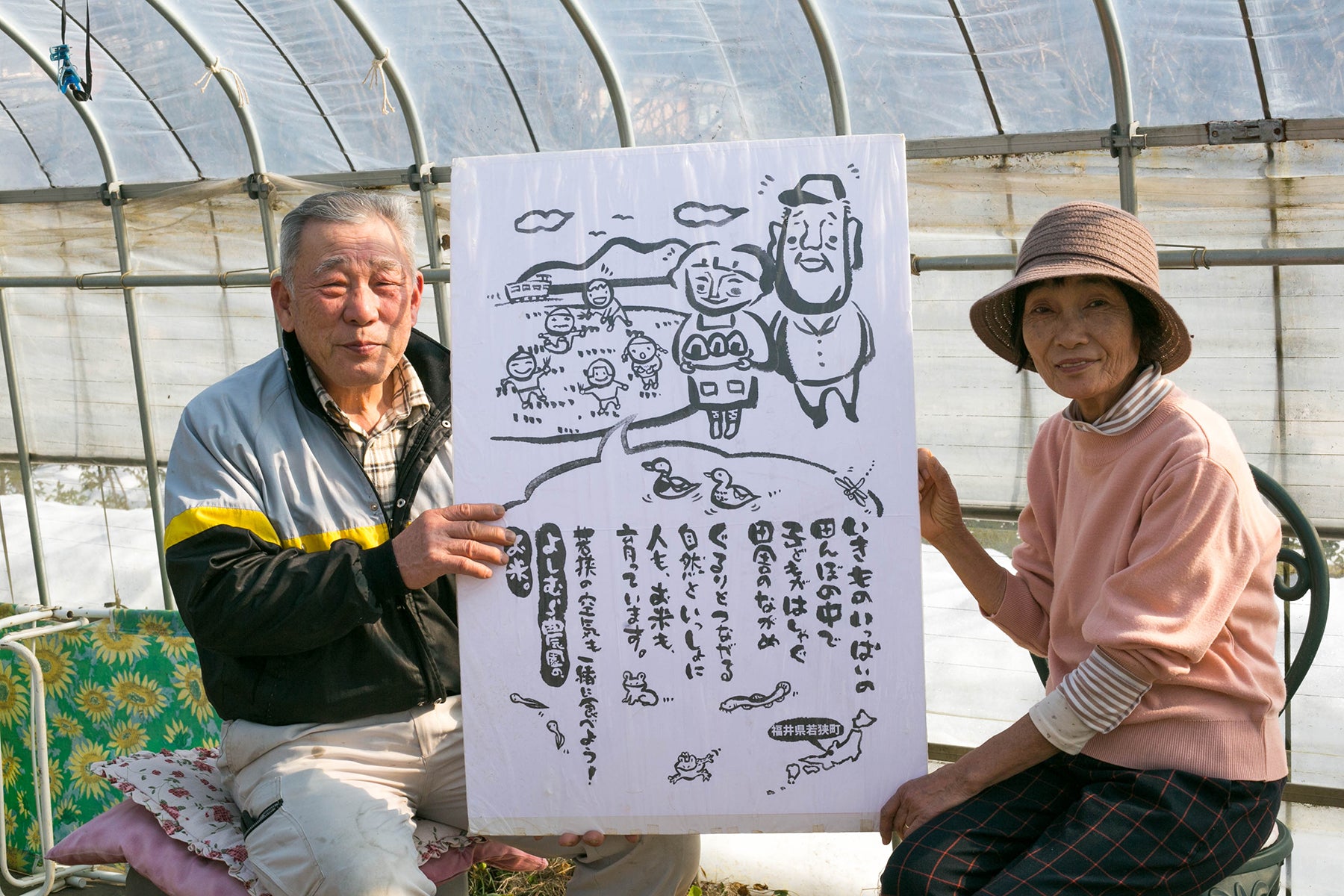
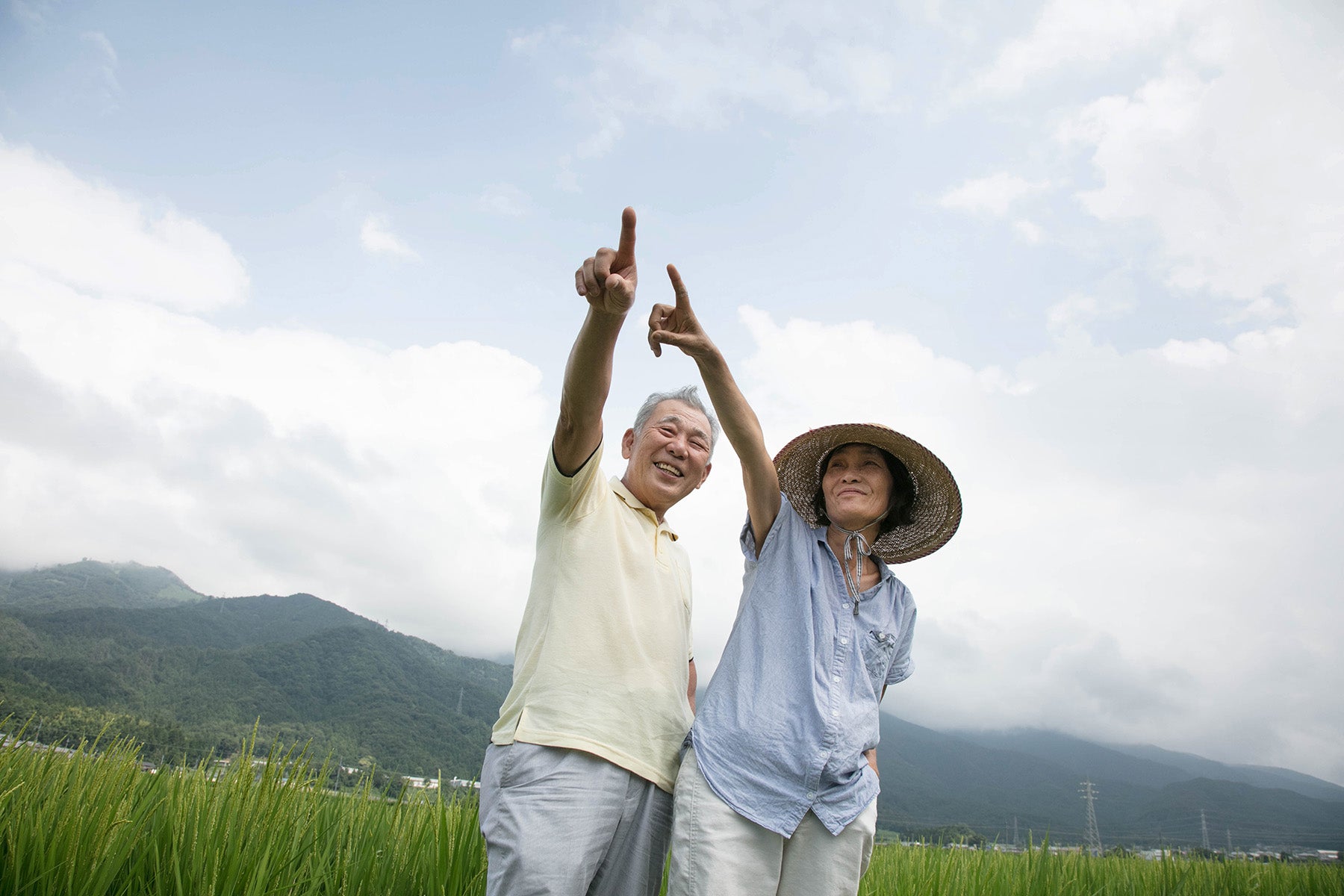
日本の原風景が残る里山を次世代に。吉村義彦の楽しみ
環境に優しい農業を夫婦で実践

豊かな大地と清らかな水に恵まれた福井県は、古来より「越山若水」と呼ばれる食の宝庫。生き物を育む農法など、栽培方法に特色がある福井米は高い品質に定評がある。
その福井県のなかでも、若狭湾国定公園にあり、ラムサール条約に登録された「三方五湖」、全国名水百選「瓜割の滝」など、三十三間山をはじめとする山々を源とする豊富な水を誇る若狭町の相田集落に、よしむら農園はある。
吉村義彦さんは安心安全な食べ物を作りたいという願いから有機農業を始め、全圃場4ヘクタールでコシヒカリ、あきさかり、ミルキークイーンなど、有機JASの米栽培を実現。古代米や福井梅、野菜の栽培も手がけている。
福井県では今年、「いちほまれ」という新しい品種の米を作ることになり、よしむら農園は有機での試験栽培の認定を受けた。「日本一おいしいお米を全国の皆様にお届けします」と宣誓した掲示板を田んぼの前に掲げ、「全米史上最高ブランド」のいちほまれを、収穫に向けて大切に育んでいる。
お勧めする理由
◉ 山、川、田んぼ。ふるさとの環境を考えた農業を実践する有機農業
◉ 全圃場有機JAS認証取得し第三者認証を大切にする安心安全な作物作り
◉ 地域の子どもたちや高齢者に対して積極的な食育活動を行い、地域貢献を実践
美しい自然の循環と共生を願って
田んぼの生き物を守る

いきものいっぱいの田んぼの中で
子どもがはしゃぐ田舎のながめ
ぐるりとつながる自然といっしょに
人も、お米も、育っています。
若狭の空気も一緒に食べよう!
これがよしむら農園のコンセプトで、私の名刺にも印刷しています。田んぼの向こうに山や川が広がり、JR小浜線の1両電車が1時間に1本ほど通るのどかな田園風景はどこか懐かしく、自然を大切に農業を営めることに感謝しています。
国土の約7割を森林が占め、世界でも有数の緑豊かな日本。その環境に農村は貢献しています。水や空気を浄化する田んぼはダムの役割を果たし、多くの生き物の命を育みます。農薬や化学肥料、除草剤を使わなければ、川や海の生物も守られます。
合鴨農法や有機JAS栽培では、微生物やミミズ、ドジョウ、カエル、鳥など、たくさんの生き物が田んぼに集まり、自然の食物連鎖が行われます。ホタルが住めるこの集落の特性を利用し、多様な生き物や植物が循環と共生のなかで支え合えるような農業をすることに誇りを持っています。
有機農業はレベルが高いと思われがちですが、最もやりやすい農業ではないかと思います。一番大切なのは太陽です。太陽エネルギーと水と炭酸ガスがあれば、お米はできます。稲と相性の合う生き物の組み合わせを実現できれば、光合成という神秘的な働きを受け、稲がそれに応えてくれます。
田舎の恵みは、みんなの宝物

子どもたちに農業に親しんでもらうため、農業体験を受け入れています。田舎の田んぼの恵みは我々農家だけの宝物ではないと考えているからです。田舎に来ること自体が体験学習です。稲を植える作業だけにこだわらず、川にいるドジョウと遊ぶ楽しみも経験して欲しいと思います。やんちゃな子もいますが、稲刈りの秋に収穫の喜びを分かち合えば、思い出が心に刻まれます。田植えや稲刈り作業後のお食事タイムでは、野の恵み山の恵み湖の恵みを少しずつ食べてもらい、田舎の本当の良さを知ってもらえるように努力しています。
ゲストティーチャーとして学校に話をしに行ったりもします。学校の先生だけでは伝えきれないことも地元の子どもたちにきちんと伝えていかないといけないので、お呼びがかかれば私も家内も喜んでやらせてもらいます。うちの野菜を給食の食材に提供しているので、家内が給食センターに野菜の説明をしに行くこともあります。私たちの想いが伝わったことがわかるような嬉しいお礼の手紙を子どもたちからもらうこともあり、できるだけ一人ずつに返事を書くようにしています。
→ 続きはこちらへ(よしむら農園 ファームレターvol12)
| 農薬 | 無農薬 |
| 肥料 | 無肥料 |
| 認証 | 有機JAS認証、自然農法認証(自然栽培) |
| 販売 | 通年 、新米は10月中旬以降 |
| 消費目安 | 玄米:1年、白米:2ヶ月 |
| 生産者 | よしむら農園 |
| 代表者 | 吉村義彦 |
| 所在地 | 福井県三方上中郡若狭町 |
オプションを選択












【福井県/よしむら農園】太陽と雨と川と田んぼ。自然とともに育む米
セール価格¥4,500
通常価格
